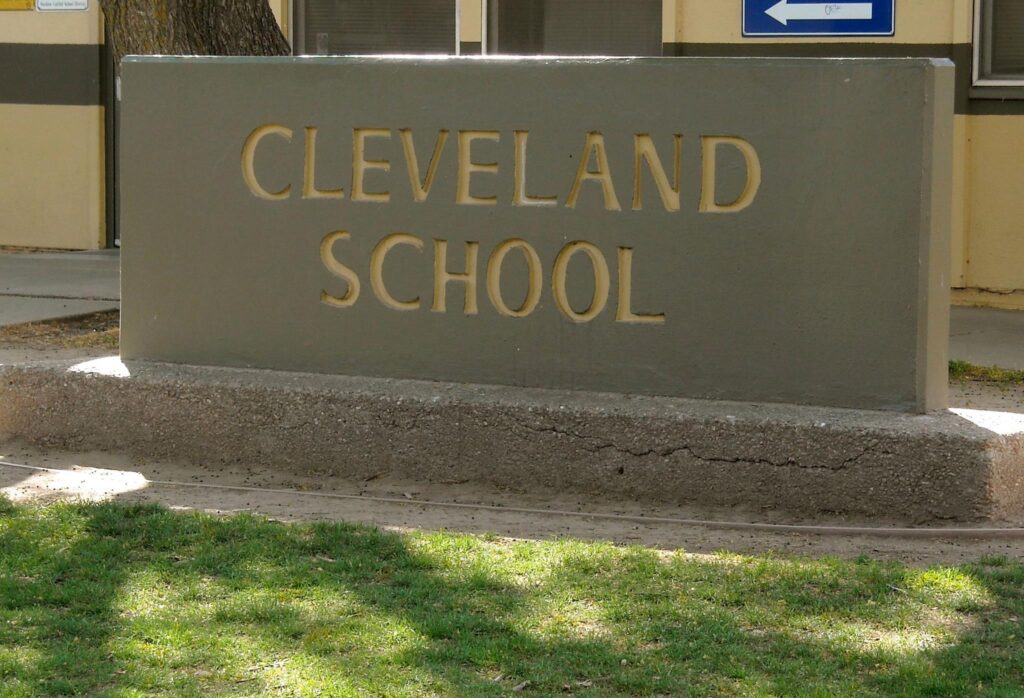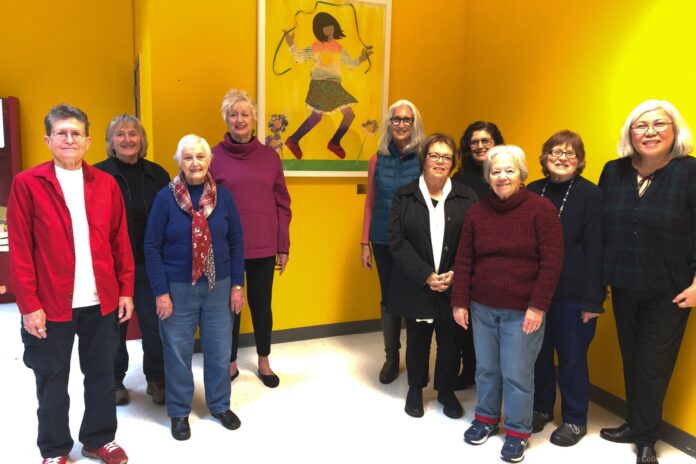Mike Vann remembered Jan. 17, 1989 as a foggy day. He was a seven-year-old second-grader at the time, nervous about an upcoming math test that morning.
As the recess bell rang, children poured into the playground, each claiming their favorite spot. Vann had returned from the water fountain and was standing by a door, deep in thought about his math test, when the sound of fireworks erupted across the playground.
Vann had no idea what exactly was happening at the time when he lined up and went back to the classroom, nor when his parents gave him the biggest hug after the police released the kids from school.
It turned out that those weren’t fireworks—instead, what Vann had heard was the Cleveland Elementary School shooting in Stockton, Calif., on Jan. 17, 1989. Five children lost their lives, and over 30 were injured. Among the children who lost their lives, four were Cambodian and one was Vietnamese. The shooter took his own life. Mike Vann is a survivor.
It has been 35 years since the shooting, but the memory has never faded. Over the years, art, architecture, personal stories and actions rooted in the incident from community members have blossomed in resilience.

The power to heal scars
Vann said that the shooting felt personal when he was young, as if the shooter had tried to target him but failed.
When he returned to school a week after the shooting, Vann found a bullet hole in the exact spot where he had stood that morning during recess. Vann said he felt guilty for surviving. Even as he gradually remembered different aspects of the incident while growing up, he grew distrustful of and distant from other people.
When he entered college, Vann did mandatory volunteer work at an agency assisting low-income families, but back then, he “couldn’t care less” about the people he worked with. However, one day, when his supervisor was walking down the stairs, Vann feel the need to do something in her presence. He approached a kid who was quietly standing in the corner and staring at a free sandwich box and offered him a sandwich. That was the beginning of Vann growing closer to the child and learning about his story.
The child’s only caregiver, his grandma, was abusing him. Every day, he would walk two miles to the center, which he considered his safe space, and kept to himself. Vann, however, took the time to connect with him. Seeing that the boy was wearing worn-out shoes, Vann later requested his organization to donate a new pair.
The day after he received the shoes, the boy began spending a long time in the restroom every morning. On the third morning, when Vann entered the restroom, he saw the child carefully washing his new shoes, balancing on his tiptoes.
That became the tipping point, Vann said. In that moment, he asked himself: What could the consequences have been if he hadn’t approached the kid?
“I would imagine, one day, maybe he wakes up to be a 30-year-old,” Vann said. “He wakes up, grabs his bag, puts it in his car and drives. He gets out, gets his bag and then he’ll jump the fence. He climbs up. He opens his bags. He sets up an AK-47 at a school playground, and then he starts firing.”
Since the day Vann talked to him, the child began to open up. He engaged with more people, smiled more, grew up and eventually graduated from college—and throughout it all, the two stayed in touch. One day, the now-adult expressed to Vann his dream to open a center teaching kids how to handle their emotions and told Vann that he had played a big role in his life.
The child had changed Vann, too. Vann learned how small efforts could profoundly impact other people’s lives and was inspired to build a career in community service. Vann participated in organizing health fairs and events throughout the county to help serve low-income communities and is now a senior community services officer with the Stockton Police Department.
Vann said he believes everybody has power. The shooter in the Cleveland Elementary School shooting had an evil power that carved an emotional scar that has run throughout his entire life, he said, but he knows that there exists positive power can heal these types of scars.
“I still have hatred for [the shooter] today,” Vann said. “But if it’s just to reach out to somebody and say that you matter, if that moment can change somebody’s life—that is huge.”
From gun control to Asian identity
Judy Weldon was a teacher at Cleveland Elementary School and a survivor of the 1989 shooting. She is also one of the founding members of Cleveland School Remembers, a non-profit dedicated to raising community awareness of gun violence and advocating for gun control.
A group of retired teachers from Cleveland Elementary School like Weldon founded the organization. These teachers in Stockton devoted their retirement to making a difference and “join[ing] with other organizations to create sensible gun laws and bring more awareness to violence prevention,” according to its website.
“Because we are teachers, it’s kind of our mission and our goal to educate the public on the difficulties and the terrible impact of gun violence,” Weldon said to AsAmNews. “We try to do what we can to facilitate good stuff.”
California passed the nation’s first Gun Violence Restraining Orders (GVRO) law in 2014, which went into effect on Jan. 1, 2016. The GVRO law allows judges to prevent an individual from possessing or purchasing any firearms or ammunition if deemed necessary.
However, Weldon said that a lot of people in Stockton are not aware of the law—even two years after it took effect. Cleveland Elementary Remembers is working to bring awareness of gun control policies such as the GVRO law to the area.
In the past five years, the organization has collaborated with the mayor of Stockton, the police department and the city council. It has invited various organizations to Stockton to conduct trainings about the law with a focus on preventing people from using guns as a negotiating tool. Some members of Cleveland School Remembers have also collaborated with San Joaquin County Behavioral Health Services to provide assistance to individuals at risk, including those at risk of suicide by firearm.
The shooting also holds significance in the Asian and Pacific Islander American community. Varun Nikore, executive director of AAPI Victory Alliance, a political advocacy group for the AAPI community, said that the Stockton school shooting strongly influenced the organization’s stance on gun control.
Even though over three decades have passed since 1989, Nikore said, the AAPI community continues to face similar, if not more severe, threats from guns today, prompting a major shift in its political priorities.
The media needs to be more aware of the ethnicity of victims and acknowledge the prevalence of anti-Asian crimes in shootings like the 1989 Cleveland Elementary School incident, columnist Gustavo Arellano wrote in the Los Angeles Times.
When the Atlanta spa shooting occurred in 2021, Arellano discovered that people around him were discussing it as the first Asian American massacre since the Gold Rush. This false characterization was the reason he wrote a column reflecting on the Cleveland Elementary shooting in 1989, an incident he remembered even though he was just 10 years old at the time.
“Media leads,” Arellano told AsAmNews. “We need to be more vigilant about context and connecting all these things.”
One thing media coverage of the Atlanta spa shootings that Arellano said did well was raising awareness about the intersectional causes behind the massacre, in which six of eight victims were Asian woman. This awareness was especially important during a time when anti-Asian hate crimes were rising following the onset of the COVID-19 pandemic.
Weldon said that when she worked as a teacher at Cleveland Elementary School, she had 32 students, and around 27 of them were Asian American children from Cambodia, Vietnam, Laos and other Asian countries.
“What made the tragedy even more tragic is that these families were fleeing from the Khmer Rouge,” said Niki Smith, a member of Cleveland School Remembers, referring to the regime that started the Cambodian genocide in 1975, which killed around two million people. “They come here, and their children get slaughtered on a playground. It was devastating.”
It as a difficult time for children who survived, Weldon said, especially those with parents who were still processing the loss of other family members. She remembered one student who was injured in the shooting and had lost her cousin, but her parents couldn’t talk to her about what she had gone through.
Within two years after the shooting, teachers at Cleveland Elementary School shifted their focus to teaching the kids how to take care of themselves, rather than emphasizing academic grades, according to Vann.
“We teachers help these children really mourn in a different culture,” Weldon said. “It became our job to help them get through it.”
“We see you. We hear you.”
Jessica Seng, a Cambodian American filmmaker, learned about the Stockton shooting after reading Afterparties, a posthumous short fiction collection written by Stockton native Anthony Veasna So.
After searching it online, Seng wondered why she had never heard of it before, even though the majority of the victims were Cambodian American like her.
“It was just kind of like a wake-up call,” Seng said. “How much do I actually know about Cambodian American history?”
After she began contacting sources to produce a documentary on the Stockton shooting, Seng began to fall in love with the city. Growing up in Tucson, Ariz., she didn’t see a lot of Cambodian communities, and in Stockton, she is learning a lot about what it means to be Cambodian American.
Seng said that she is amazed by how easily she can get Cambodian food from a street vendor in Stockton. There are also two Cambodian temples in the Stockton area, including a Buddhist temple called Wat Dhammararam.
Throughout the early stages of producing and fundraising for the documentary, Seng gained many insights from the community about coping with trauma and the healing process. For her future audience, Seng said that she hopes they can resonate with the journey of overcoming obstacles and learning to grieve that her film hopes to portray. But ultimately, she said that she wants everything to be returned to the community.
“I don’t want a Cambodian narrative to just be about trauma,” Seng said. “I really hope that we can focus on healing resilience and what this community has been able to build because it’s extremely beautiful.”
There are still traces of the Cleveland Elementary School shooting embedded in the streets of Stockton.
At the city’s heart, the Children’s Museum of Stockton is housed in a 22,000-square-foot building, adorned with a colorful wall featuring kids of different ethnicities dancing and playing. This mural was created as a way to remember the 1989 shooting. A teacher injured in the shooting conceived the idea and brought it to fruition in 1994 with the help of donors and the city.
In 2023, the museum installed a painting made by a retired Cleveland Elementary School teacher to remember a student who was killed in the shooting. In the picture, the girl is jumping rope on a meadow with flowers. She has short hair and wears a light-colored top and a deep green dress.
Every year on Jan. 17, Cleveland School Remembers holds a vigil for all the victims and survivors of the 1989 shooting. Tonight at 5 p.m., several guest are going to give speeches, and Judy Weldon is excited for a surprise guest appearance.

Weldon said the tragic event is like a tattoo on the heart, and its effects ripples out from the victims and their families. It took her years to heal from the incident. People who haven’t lived through that pain may set it aside, saying that the shooting happened 35 years ago, but there are individuals who are still suffering from it, still struggling to talk about it.
“Because they have shrapnel in their bodies,” Weldon said, “it’s important just to honor them and let them know that we think about them. We’re saying that: ‘We see you. We hear you.’”
AsAmNews is published by the non-profit, Asian American Media Inc.
We are currently funded by our readers and such charitable foundations as the Robert Wood Johnson Foundation, AARP, Report for America/GroundTruth Project & Koo and Patricia Yuen of the Yuen Foundation.’
Find additional content on Bluesky, Facebook, Instagram , Tiktok, X, and YouTube. Please consider interning, joining our staff, or submitting a story, or making a tax-deductible donation.
You can make your tax-deductible donations here via credit card, debit card, Apple Pay, Google Pay, PayPal and Venmo. Stock donations and donations via DAFs are also welcomed. Contact us at info @ asamnews dot com for more info.



